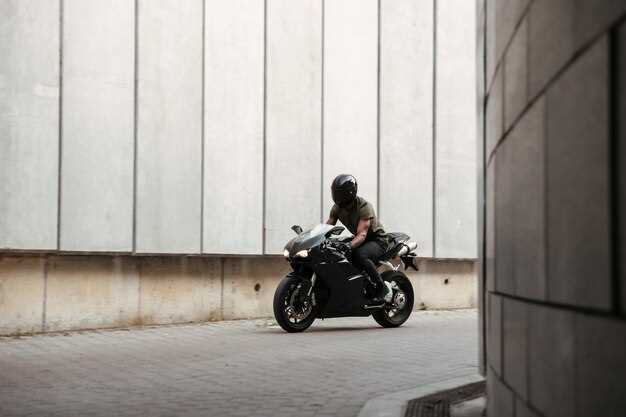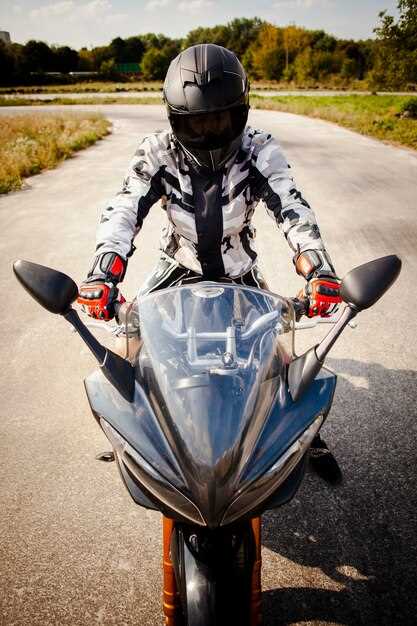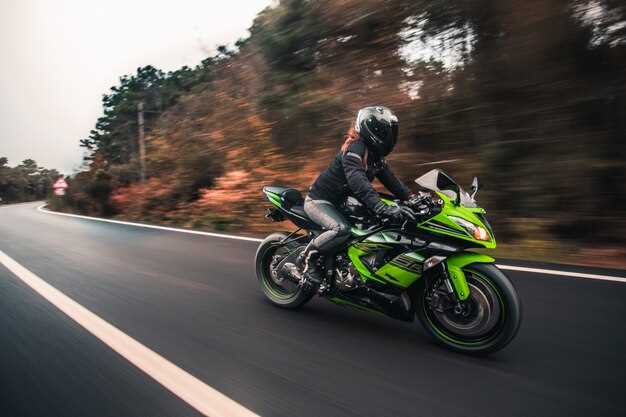

The world of sportbikes is a thrilling realm where speed meets cutting-edge technology and design. For motorcycle enthusiasts, the quest for the ultimate high-performance machine is a journey filled with excitement and adrenaline. Each year, manufacturers push the boundaries of engineering to deliver bikes that not only look stunning but also offer unmatched performance on the road and racetrack.
In this article, we will explore some of the top sportbikes that have made their mark in the industry, emphasizing their speed, handling, and innovative features. From sleek aerodynamic bodies to powerful engines, these motorcycles represent the pinnacle of performance and craftsmanship. Whether you’re a seasoned rider or a newcomer looking to dive into the world of high-speed cycling, this guide will help you understand what makes these machines stand out.
Join us as we delve into the specifications, unique selling points, and riding experiences of these exceptional sportbikes. Prepare to get inspired by the engineering marvels that not only satisfy the need for speed but also provide a thrilling ride filled with agility and precision. Buckle up; the race for the ultimate sportbike begins now.
Unmatched Acceleration: Top Picks for Quick Getaways
When it comes to sportbikes, acceleration is paramount for riders seeking thrilling experiences and quick escapes. The following models stand out for their remarkable power-to-weight ratios and advanced engineering, offering exhilarating launches that thrill any motorcycle enthusiast.
The Kawasaki Ninja H2 is a prime example, featuring a supercharged 998cc inline-four engine that delivers overwhelming torque and rapid acceleration. With a top speed exceeding 200 mph, this bike is engineered for high-performance track days and thrilling street rides.
The Ducati Panigale V4 showcases cutting-edge technology and a potent 1,103cc Desmosedici Stradale engine. It achieves 0 to 60 mph in mere seconds, thanks to its lightweight chassis and advanced electronics, making it an exceptional choice for riders who crave precision and speed.
The BMW S1000RR blends high-performance capabilities with everyday usability. Its 999cc inline-four engine offers an impressive 205 horsepower, ensuring lightning-fast getaways. The bike’s agility and responsive handling make it a favorite among both professional racers and weekend riders.
Another noteworthy contender is the Aprilila RSV4 1100 Factory. This model features a 1,099cc V4 engine that produces breathtaking acceleration, combined with a sophisticated electronics package that enhances rider control and traction. The design and aerodynamics also contribute to its exceptional speed and stability.
For those seeking an American touch, the Harley-Davidson LiveWire brings electric power into the mix. Its instant torque delivery offers an unmatched acceleration experience, allowing riders to dart ahead with remarkable immediacy, showcasing that performance is not solely the domain of traditional combustion engines.
Choosing a sportbike that excels in acceleration is crucial for riders who aspire to achieve the ultimate performance on the road. Each of these models not only emphasizes speed but also incorporates advanced technology and rider-centric features, making every ride an exhilarating adventure.
Handling Mastery: Sportbikes Designed for Precision and Control

When it comes to sportbikes, handling is a critical factor that distinguishes top models from the rest. Mastering the art of precision and control, these motorcycles are engineered to deliver an unparalleled riding experience. The combination of lightweight materials, advanced suspension systems, and ergonomic designs enables riders to navigate curves and straightaways with confidence.
Chassis Design plays a significant role in a sportbike’s handling capabilities. Leading manufacturers focus on creating a balanced frame that minimizes flex, enhancing stability during high-speed maneuvers. This structural integrity allows riders to feel more connected to the motorcycle, enabling sharper turns and quicker response times to throttle inputs.
The suspension system is another crucial element. High-performance sportbikes are equipped with adjustable forks and shock absorbers that can be fine-tuned to suit different riding styles and conditions. These suspensions offer optimal feedback, ensuring that riders maintain precise control over their machines, even on uneven surfaces.
Additionally, tire technology has advanced significantly, providing enhanced grip and traction. Modern sportbike tires are designed with specific tread patterns that maximize contact with the road, improving cornering stability and overall handling. This allows riders to push their bikes to the limit while maintaining safety.
Weight distribution also influences a sportbike’s ability to maneuver. By strategically placing heavy components closer to the center of the bike, manufacturers achieve better balance and agility. This design consideration results in quicker lean angles and a more responsive ride, vital for adept cornering.
Finally, electronics such as traction control and quick shifters contribute to handling mastery. These systems assist riders in maintaining stability during aggressive acceleration and deceleration, allowing for smoother transitions through corners without sacrificing speed.
Overall, sportbikes designed for precision and control offer a perfect blend of technology and engineering mastery. Their advanced features not only enhance the thrill of riding but also instill confidence in the rider, making them an ideal choice for both tracks and canyons.
Rider Comfort at High Speeds: Ergonomic Features to Consider

Rider comfort is paramount when it comes to high-performance sportbikes, as prolonged exposure to elevated speeds can lead to fatigue and discomfort. Key ergonomic features greatly influence the overall riding experience and efficiency. One of the first elements to consider is the seat design. A well-cushioned, supportive seat can make a substantial difference, providing both comfort and stability during long rides.
The handlebar positioning is another critical factor. Sportbikes often feature clip-on handlebars that promote a forward-leaning posture, enhancing aerodynamics. However, this can also put strain on the wrists and shoulders. Adjustable handlebars can offer the ability to customize the riding position to suit personal preferences and body types, reducing strain and enhancing overall comfort.
Footpeg placement is equally vital for rider comfort. Higher footpegs can improve cornering clearance and control but may lead to cramping during extended riding. Adjustable footpeg systems allow riders to find a balance between performance and comfort through different positions and angles.
Wind protection contributes significantly to rider comfort at high speeds. A well-designed fairing and windshield can deflect wind away from the rider, reducing fatigue caused by wind resistance and turbulence. Riders should consider sportbikes with adjustable windshields to tailor the airflow according to their personal comfort and riding style.
Additionally, the overall weight distribution of the motorcycle affects rider fatigue. A well-balanced sportbike minimizes effort during handling, allowing riders to maintain control without excessive muscle strain. Features such as lightweight frames and optimized center of gravity can contribute to improved handling and comfort during high-speed maneuvers.
Finally, integrated technology in modern sportbikes, such as cruise control, customizable ride modes, and electronic suspension adjustments, can enhance the riding experience. These technologies allow riders to adapt their bike’s performance to their comfort needs, ensuring a more enjoyable ride at high speeds.






